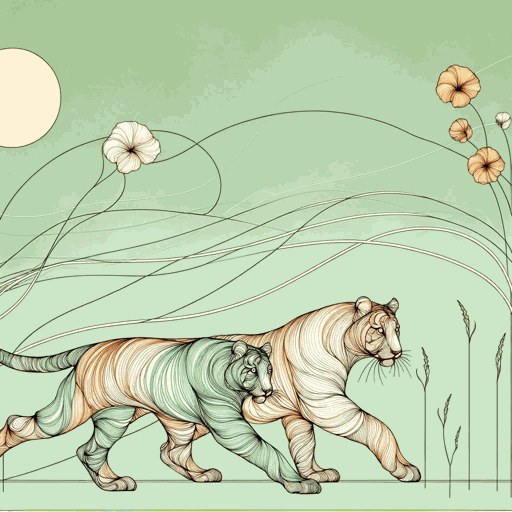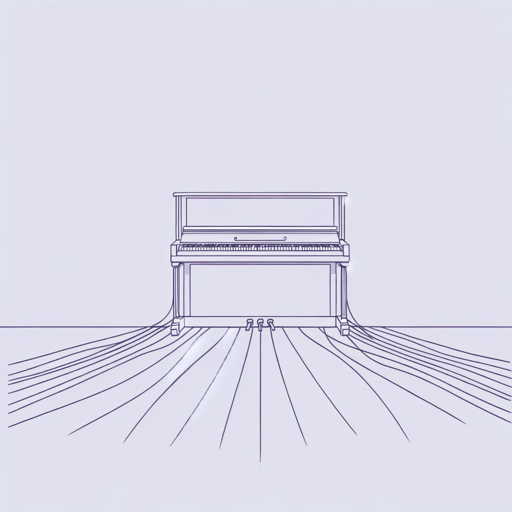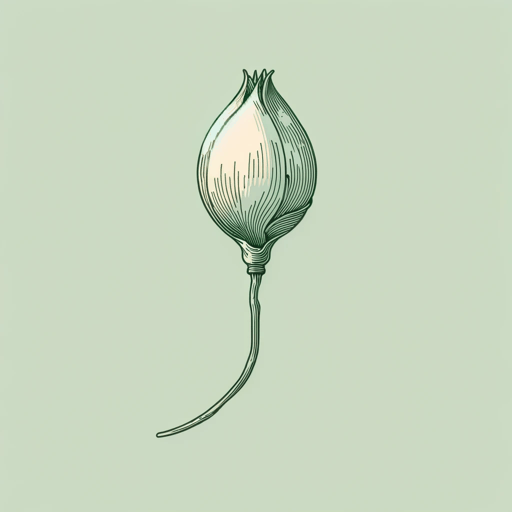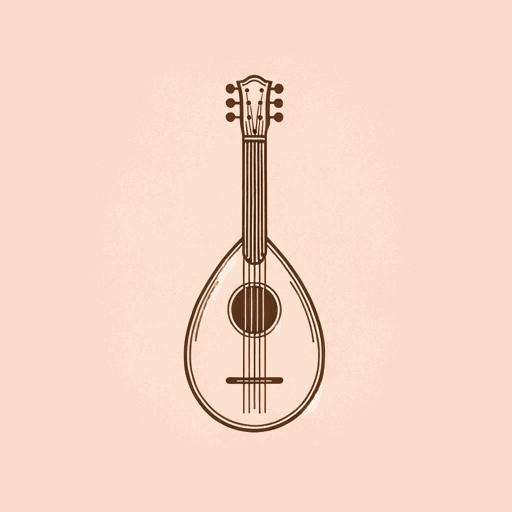23 pages • 46 minutes read
Adrienne RichSnapshots of a Daughter-in-Law
Fiction | Poem | Adult | Published in 1963A modern alternative to SparkNotes and CliffsNotes, SuperSummary offers high-quality Study Guides with detailed chapter summaries and analysis of major themes, characters, and more.
Summary and Study Guide
Overview
Adrienne Cecil Rich (1929—2012) is an American writer considered one of the pioneering feminists in American poetry. She provocatively wrote on a wide range of topics including the politics of sexuality, race, language, power, and women’s culture. Her works span 19 volumes of poetry, three collections of essays, and a revolutionary study of motherhood; she also edited influential lesbian-feminist journals, worked in academia, and was a lifelong activist. The kind of writing and thought leadership she accomplished continue to be relevant across ages—resonating with contemporary feminism and its resistance to racism, militarism, anti-Semitism, and homophobia.
Snapshots of a Daughter-in-Law (1963) composes the title poem of the eponymous collection. Written over the course of two years (1958-60) the poem is an important piece in Rich’s canon, reflecting the transition in style she underwent during these years. The poem is divided into 10 sections; each is composed in formal and carefully controlled free verse. As the name suggests, the piece presents photographic descriptions of different moments in the life of a “daughter-in-law." The daughter-in-law in question is not an individual woman but a persona, and references are made to other, famous women personalities fulfilling this role. The poem’s key message is how the societal role of women overshadows their individuality, creativity, talent, and potential for excellence.
Rich’s experiences as a wife and mother fuel the theme and content of this piece; however, while derived from her subjective experiences, it explores the place of woman within society. Penned during a time when a woman’s purpose was largely considered to be that of child-bearing, the poem contains historical relevance. Rich’s later works more prominently reflect feminist, anti-war, and pro-civil rights ideas and sentiment, as she began to increasingly align with left-leaning thought. Influenced by feminist ideology, this poem and the subsequent collection marks the beginnings of this change in the subject matter explored by Rich in her writing.
Poet Biography
Adrienne Cecil Rich (1929—2012) was born on May 16, 1929, in Baltimore, Maryland. Her father Arnold Rice Rich was a renowned pathologist and professor of medicine at John Hopkins Medical School, while her mother, Helen Jones Rich, was a pianist. Rich attended the Roland Park Country school and graduated from Radcliffe College, Harvard. Rich’s father and her undergraduate education were crucial to her poetic career—the former greatly encouraged her to read and write poetry, while the latter provided her a space to explore and learn how to compose poetry. In her final year at Radcliffe, her first collection of poems—A Change of World (1951)—was selected by W.H. Auden for the Yale Series of Younger Poets Award, marking the beginning of Rich’s long and illustrious literary career.
Upon graduating from Radcliffe and receipt of the Guggenheim Fellowship, Rich studied at Oxford for a year. She married Alfred Haskell Conrad—professor of economics at Harvard—in 1953; they settled in Cambridge, Massachusetts and had three sons. Two years into the marriage, Rich published her second volume of poetry, The Diamond Cutters (1955). In the 1960s, she received the National Institute of Arts and Letters award (1960), her second Guggenheim Fellowship to work at the Netherlands Economic Institute (1961), and the Bollingen Foundation grant for the translation of Dutch poetry (1962). Her third collection, Snapshots of a Daughter-in-Law (1963), marks a significant change in her style and the subject matter she explored.
In the mid-60s, Rich began to develop an affinity towards left-leaning thought and attitude; she subsequently joined the New Left and moved to New York. Rich began to take part in feminist, anti-war, and pro-civil rights movements—even actively condemning the Vietnam War. This phase of her life is reflected in the poetry she produced during the time: Necessities of Life (1966), Leaflets (1969), and The Will to Change (1971).
Rich’s political affiliations began to cause trouble in her marriage, and she was divorced in 1970; shortly after, her ex-husband died by suicide. Following the end of Rich’s marriage, exploration of her own sexuality subtly reflected in her writing. Rich received the Shelley Memorial Award from the Poetry Society of America in 1971, and taught at Brandeis University as the Hurst Visiting Professor of Creative Writing for the rest of the year. Her poetry collection, Diving into the Wreck (1973), resulted in her sharing the 1974 National Book Award with Allen Ginsberg; however, Rich declined to individually accept it, and was joined by two other nominated poets—Alice Walker and Audre Lorde—to accept it on behalf of all the women who remained unheard in a patriarchal world.
Rich held teaching positions at universities throughout the late 1970s, 80s, and 90s at City College, Rutgers, UC Santa Cruz, Scripps College, San Jose State University, Stanford, and Cornell. Her activism continued well into the late stages of her life: In 1997, Rich declined the National Medal of Arts in protest against various policies of the American government including the decision to end the National Endowment for Arts. She participated in anti-war activities in the early 2000s, protesting against the Iraq war.
Rich’s final collection of poetry was published in 2011; she passed away from complications related to rheumatoid arthritis in March 2012.
Poem Text
Rich, Adrienne. “Snapshots of a Daughter-in-Law.” 1963. Snapshots of a Daughter-in-Law: Poems, 1954-1962, Harper & Row.
Summary
In the first section, the speaker describes an older woman who used to be a Southern beauty with “henna-colored hair” (Line 2) and youthful skin. She still does things that call to when she was young and beautiful: She wears clothes in patterns that she used to as a young woman (Line 3), and plays music that brings up “Delicious recollections” (Line 5) of her past. While still physically healthy and in her “prime” (Line 11), her mind has dulled and dimmed with the things she has seen and experienced over the years (Lines 7-8). She is given to irrationality, spending her time indulging in gossip, jealousy, and “fantasy” (Line 9). Her daughter seems to resent this; she sees who her mother has become and wants to “[grow] another way” (Line 13).
The second section sees a woman described as washing coffee pots in the sink and listening to “angels chiding” (Line 15). She hears voices telling her to not idly wait, to not restrict her desires and the things she wants from life, and to prioritize herself in order to escape a fate similar to her mother-in-law: She can only save herself (Lines 17-19). In listening, the woman occasionally lets hot water scald her hand (Line 20), lights a match to her thumbnail (Line 21), and even holds her hand above the kettle’s spout as it steams (Line 22-23). She believes the voices are of angels, as none of this seems to cause her pain (Lines 23-24); the only thing that hurts is to wake up every day to the same monotonous life of domestic chores (Line 25).
In the third section, the speaker reflects on how any “thinking woman” (Line 26) would be unable to sleep at night when the “monsters” (Line 26) of her dreary and oppressive life visit. Women conform to what is believed natural of them, but the perception of a woman’s nature is, in fact, composed of “tempora” (the times) and “mores” (social norms and customs) (Lines 27-29). Underneath things like flowers and menstrual pills, the kind of bravery and ferocity of which women are capable—as exemplified by queen Boadicea—goes unnoticed (Lines 30-32). The speaker describes a snapshot of two women caught in a loud argument she can hear over the “cut glass and majolica” (Line 35). They attack each other’s character, using the same insults that they each have, as women, been hurt by before (Lines 37-39).
The fourth section opens with the speaker’s description of how all women see aspects of themselves reflected in each other; they use this knowledge to hurt the other, their insults growing sharper in the face of the other’s scorn (Lines 40-42). The speaker describes yet another woman who reads while waiting for the iron to heat (Lines 43-44); she writes a poem while waiting for jam to boil in an “Amherst pantry” (Line 46); but despite being sharp and purposeful (Line 49), she mostly spends her time in domestic chores such as cleaning and dusting (Lines 50).
The fifth section discusses a woman shaving her legs until they “gleam / like petrified mammoth tusk” (Lines 52-53), while she smiles and sweetly laughs (Line 51).
In the sixth section, the speaker describes how Corinna does not sing her own words or music, when she plays the lute (Lines 54-55); only her hair and appearance—which she adjusts according to others’ perceptions of her—is her own (Lines 56-59). The speaker addresses Corinna who is “poised” (Line 60) but also “trembling,” “unsatisfied” (Line 60), and inhabiting a cage with an unlocked door (Line 61), asking if this is fertile pain (Line 63). The speaker further asks whether, having for so long been “Pinned down / by love” (Line 63-64), the woman is keen to explore and discover things kept from her (Lines 65-66), or whether she will remain forever domesticated by Nature, who has shown “household books” (Line 67) only to her daughters-in-law and not her sons (Lines 66-68).
The speaker quotes Mary Wollstonecraft in the beginning of the seventh section who said it is important for women to have a place in this world that cannot be undermined (Lines 69-71). The speaker calls Wollstonecraft a woman who was “partly brave and partly good” (Line 73) and who fought for education even though she was not educated herself (Line 74). Her achievement intimidated the men around her; she was consequently labelled a “harpy, shrew and whore” (Line 76).
Section 8 opens with a quote by Diderot: “You all die at fifteen” (Line 77). The speaker agrees with this assertion, as women marry by this age upon which their lives effectively come to a standstill, turning “part legend” (Line 78), as they completely give in to “convention” (Line 78). Despite this, women continue to “inaccurately dream” (Line 79), even as they remain behind closed windows of the house and kitchen (Line 80). The memories of what they had been stirs something in their middle-aged bosoms, similar to the excitement brought about the possibility of adultery, though both are ultimately turned down (Lines 81-85).
In Section 9, the speaker describes how women are applauded for even mediocre attempts at doing something, as they are not expected to do things well (Lines 86-87). Now identifying with the women whom she is addressing, the speaker questions whether all women are willing to give up the “luxury of the precocious child” (Line 89) of being praised for the smallest of things. The thing that is most detrimental to women has been the fact that they are not expected to accomplish much (Line 92); they have been content so far with rough talent and without the expectation or opportunity to be polished (Line 93-94).
The speaker then calls to all women to “[sigh] no more” (Line 95). She asserts time is “male” (Line 96) and has always toasted beauty more than all else (Line 97). Women have, thus, been appreciated for mere mediocrities, with their inaction praised as selfless renunciation and unformed or untidy ideas taken as intuition (Lines 99-101). All women’s lapses are forgiven and the only crimes for which they are punished are if they dare to be seen and assert their presence, or break from the archaic and irrelevant societal restrictions (Lines 102-04). For these, they receive the harshest punishments, akin to those suffered by prisoners or even soldiers at war; there are few women willing to martyr themselves and accordingly suffer (Lines 105-07).
In the tenth and concluding section, the speaker expresses hope for a brighter future for women, predicting the impending arrival of a woman who will be harder on herself than history has been to her (Lines 108-10). The speaker foresees said woman plunging headfirst into worthwhile and intellectual work, equal to any man or machine in beauty and efficiency (Lines 111-15). She will be ruthless in how she forges ahead, and her achievements will no longer be a promise to be fulfilled in the future—they will exist as tangible, something belonging to all women (Lines 118-22).
Related Titles
By Adrienne Rich

Aunt Jennifer's Tigers
Adrienne Rich

A Valediction Forbidding Mourning
Adrienne Rich

Diving into the Wreck
Adrienne Rich

Living in Sin
Adrienne Rich

Necessities of Life
Adrienne Rich

Planetarium
Adrienne Rich

Tonight No Poetry Will Serve
Adrienne Rich

Vesuvius at Home: The Power of Emily Dickinson
Adrienne Rich

